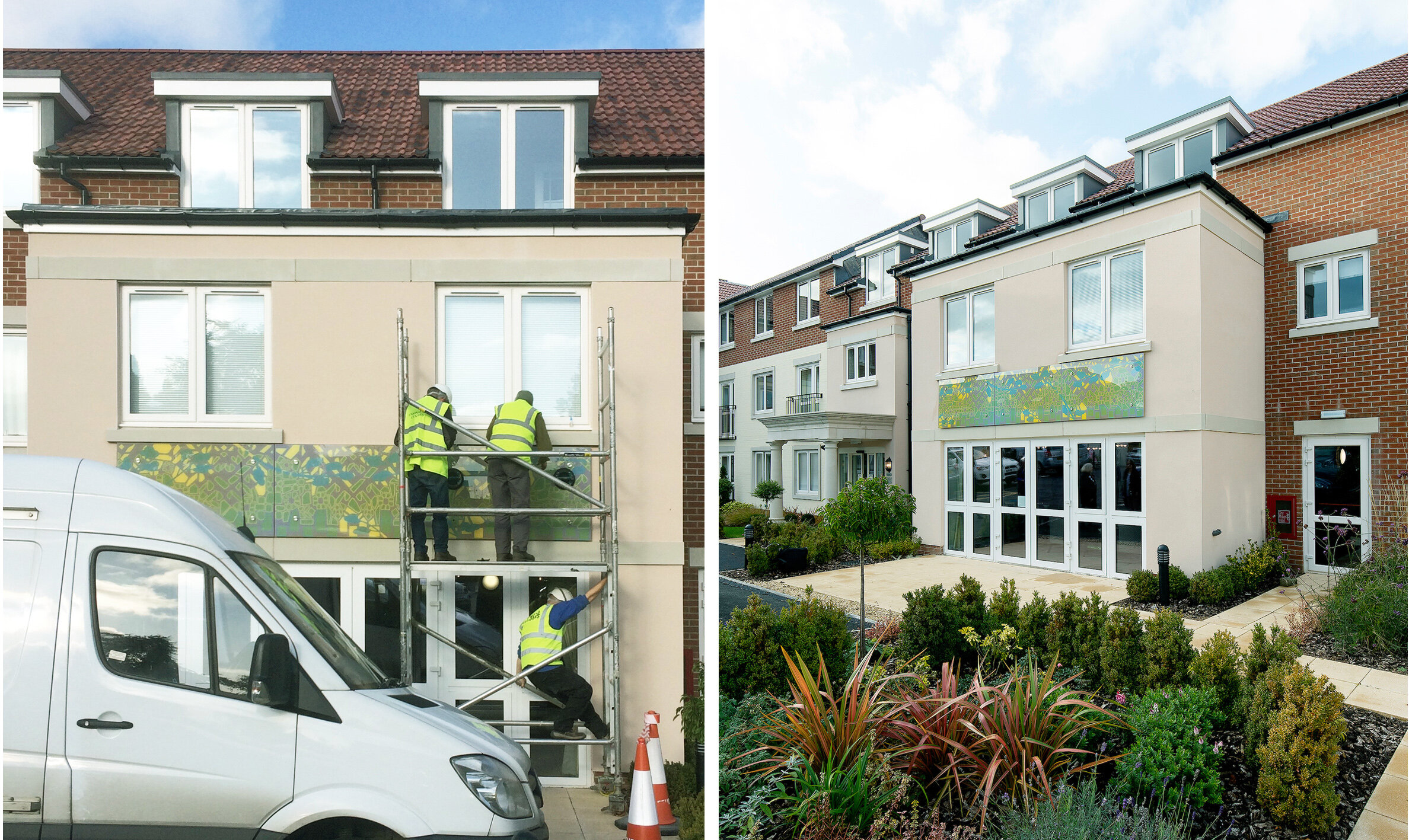Two layers installed, from the front, 960 x 790 mm.
This is a new commission for a house in London. The glass panel is in a place where there used to be a fishtank (with different dimensions); the client asked for geometry, textured colour, transparency and no flowers. I suggested two layers of glass to get interesting overlaps and a sense of movement and the project manager suggested edge lighting - we are are all pleased with the result which you can see in the photos above taken on installation day. The following pictures document the commission in progress, from first designs to final firing in my studio kiln.
Left: Original model made of acrylic. Centre: Half size watercolour design. Right: Sample on 2 sheets of glass
First layer of enamel on the lightbox (left) and after firing in the kiln (right).
Some handpainting on the second layer, trying (never succeeding) to match to the colour samples.
The two panels in the kiln before their final firing.
Above: studio shot showing panels on lightbox Below: finished panels with tracing paper backing in the window
Painting enamel on the two layers of glass (shown separately above) and overlapping them in the window frame (below left) means the colours keep their own hue. Transparent glass enamels are very unpredictable when mixed and layering them often results in a lot of brown. The colours we ended up with are brighter than I had originally planned and they look absolutely great with the pinky decor and the concealed lighting which runs around the edges of both panels (below right).
Two layers installed, from the back with lights off (left) and on (right).
The best details of the glass (below) are from the back, from the hallway behind the living room which is the darker side. As less light falls on this surface of the glass, the transparent colours are brought to life by the light through the living room window, even when the lights are off. The proportions of my design match those of the windows in the house, with a sandblasted off centre box where the two halves of the design come together and frame that window (below right).
Details of the glass from the back













